Abandoned 1947 Proposed 1938 | Opponents W. H. R. Nimmo | |
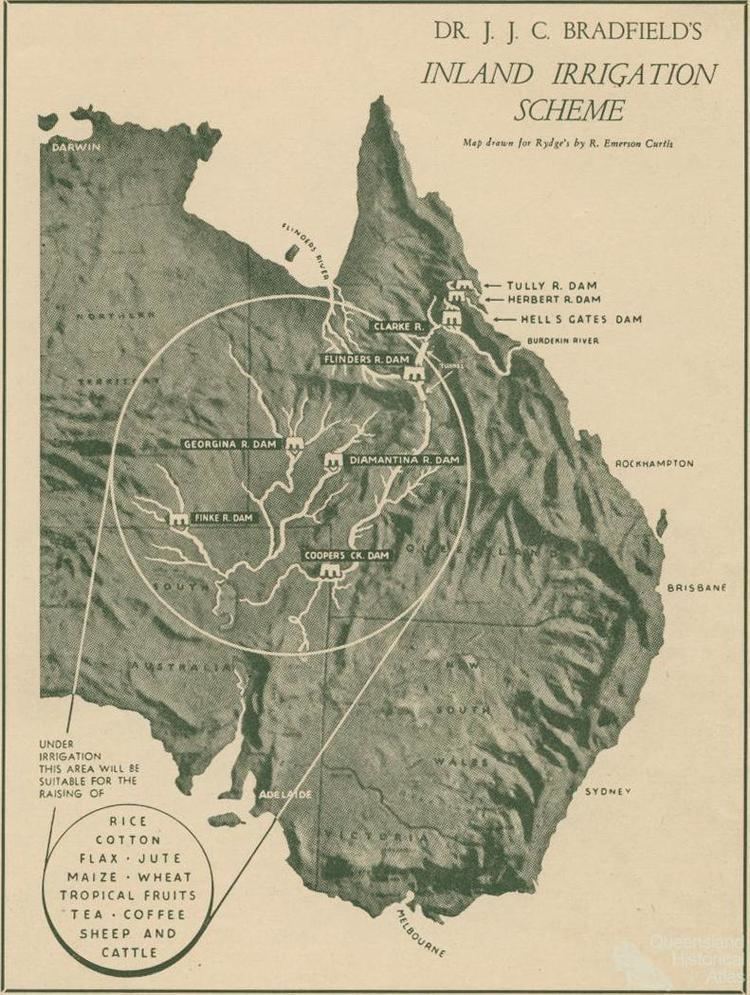 | ||
Proponents John BradfieldBob KatterPeter Beattie | ||
The Bradfield Scheme, a proposed Australian water diversion scheme, is an inland irrigation project that was designed to irrigate and drought-proof much of the western Queensland interior, as well as large areas of South Australia. It was devised by Dr John Bradfield (1867–1943), a Queensland born civil engineer, who also designed the Sydney Harbour Bridge and Brisbane's Story Bridge. Some people considered the plan to be lacking in scientific justification, excessively expensive, and overly optimistic.
Contents
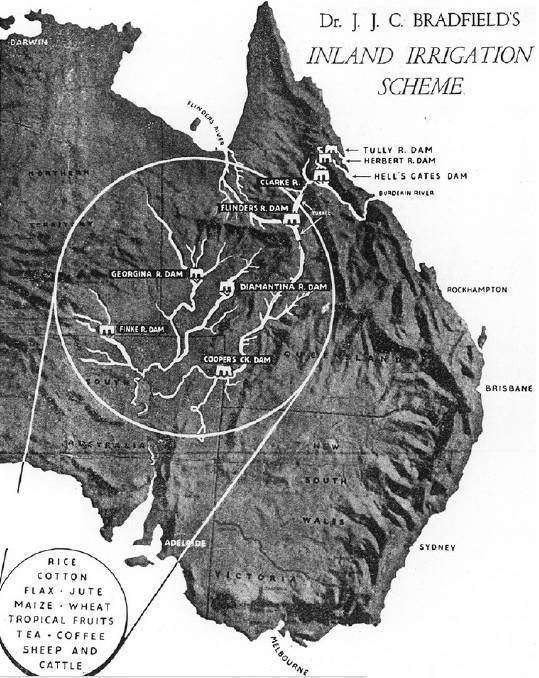
The scheme that Bradfield proposed in 1938 required large pipes, tunnels, pumps and dams. It involved diverting water from the upper reaches of the Tully, Herbert and Burdekin rivers. These Queensland rivers are fed by the monsoon, and flow east to the Coral Sea. It was proposed that the water would enter the Thomson River on the western side of the Great Dividing Range and eventually flow south west to Lake Eyre. An alternative plan was to divert water into the Flinders River.
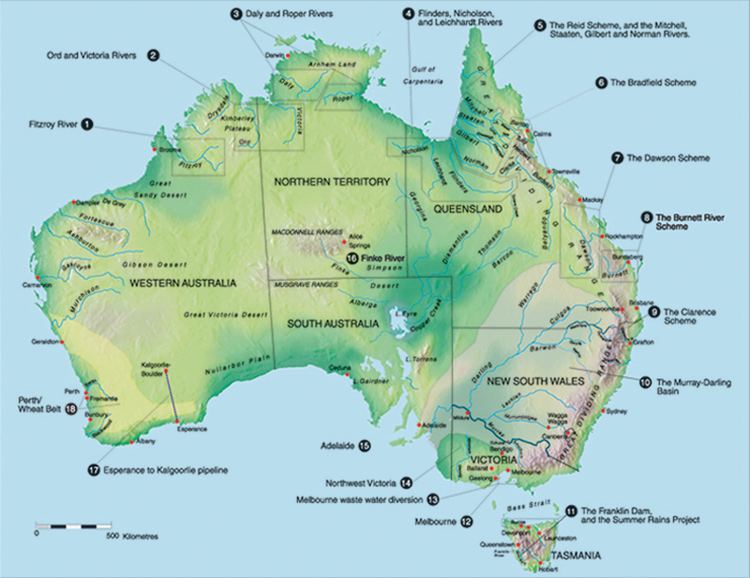
There have been no attempts to implement the scheme, although the plan is raised from time to time.
Possible benefits

The water was expected to provide irrigation for more than 1,000,000,000 hectares (2.5×109 acres) of agricultural land in Queensland. The scheme would reduce the massive natural erosion problems in areas of Central Queensland. The scheme had the ability to generate 370 megawatts (500,000 hp) of power and the potential to double that amount. Controlling and reducing the flow of northern rivers into the ocean may benefit the Great Barrier Reef as fresh water causes coral bleaching, and the excess nutrients in the rivers from coastal farming and development support algal growth that can harm the reef.

It is claimed that extra water and vegetation in the interior may then produce changes to the climate of Australia, however various studies have concluded that this is unlikely. This may increase the rainfall in areas of southern Queensland and northern New South Wales. Extra rainfall may drought-proof Eastern Queensland, and thereby improve river inflows to the Murray-Darling River system. It is claimed that a full Lake Eyre would moderate the air temperature in the region by the absorption of sunlight by the water instead of heat radiation from dry land into the air. No evidence to support the theory that an inland sea would increase rainfall has ever been produced, nor have any of the other claims been supported.
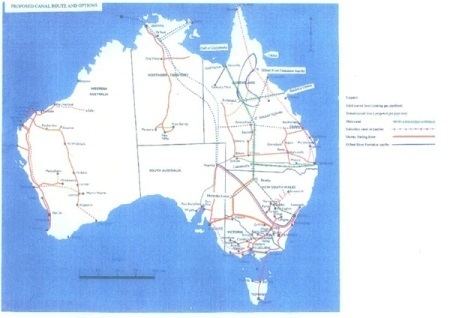
It would provide large areas suitable for the production of algae fuel, a type of biofuel. The catchment area of the Herbert River holds a population of approximately 18,000, 75% of whom dwell in the lower flood plain area. Diverting some water from this river would reduce the risk of flood.
Objections
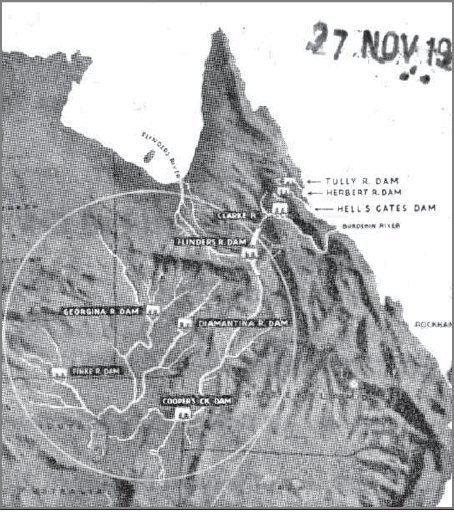
Bradfield's scheme and others have been criticised because they are not practical. This scheme has been criticised because of the high capital and ongoing running costs which would make the project uneconomic.
Elevation measurements were taken with a barometer, leading to inaccuracies in land heights and mistakes in the proposal. In most cases no flow record of the rivers were available to Bradfield. He used an empirical formula which assumed 33% of the water flow would be lost to evaporation and seepage. The estimated water available for the scheme was 114 cubic metres per second (4,000 cu ft/s).
The extreme evaporation rate in the interior is another negative determinant. No clear evidence has been provided that the amount of water supplied will exceed the evaporation rate. The reduction in river discharge to the Great Barrier Reef Lagoon may diminish coastal fisheries by reducing the supply of terrestrial organic matter to the coastal and estuarine environment.
In 1947, W.H.R. Nimmo, conducted a critical review of the scheme. He proved that Bradfield's estimates of the amount of water available from the easterly flowing rivers were about two and half times greater than it actually was. The error was attributed to the methodology used to calculate flow estimates was based on German rivers where the average temperature was much less than in northern Australia.
Support
The Bradfield Scheme has not received broad political support from any of the major Australian parties in recent times however it has been pushed by individual politicians such as Bob Katter who advocated the plan whilst he was a member of the Nationals for the state seat of Flinders during the 1980s and continues to support it as an independent, representing the federal seat of Kennedy. In February 2007, the then Queensland Premier Peter Beattie urged the Federal Government to look at a modern version, saying it is better to find more water than to cut back on current supplies.
In contrast to this, the scheme is often amongst the policies of a number of minor parties and independent candidates. A modified scheme was also strongly supported by Selwyn Johnston, an independent candidate for the Senate representing Queensland at the 2007 federal election. Adrian Watts, a Citizens Electoral Council candidate for the federal seat of Bass at the 2010 federal election stated that:
This scheme was seen during World War II and much of the twentieth century, as an essential step in building a secure and prosperous nation. It was regarded as the next great water engineering project to build after the Snowy Mountains Scheme.
